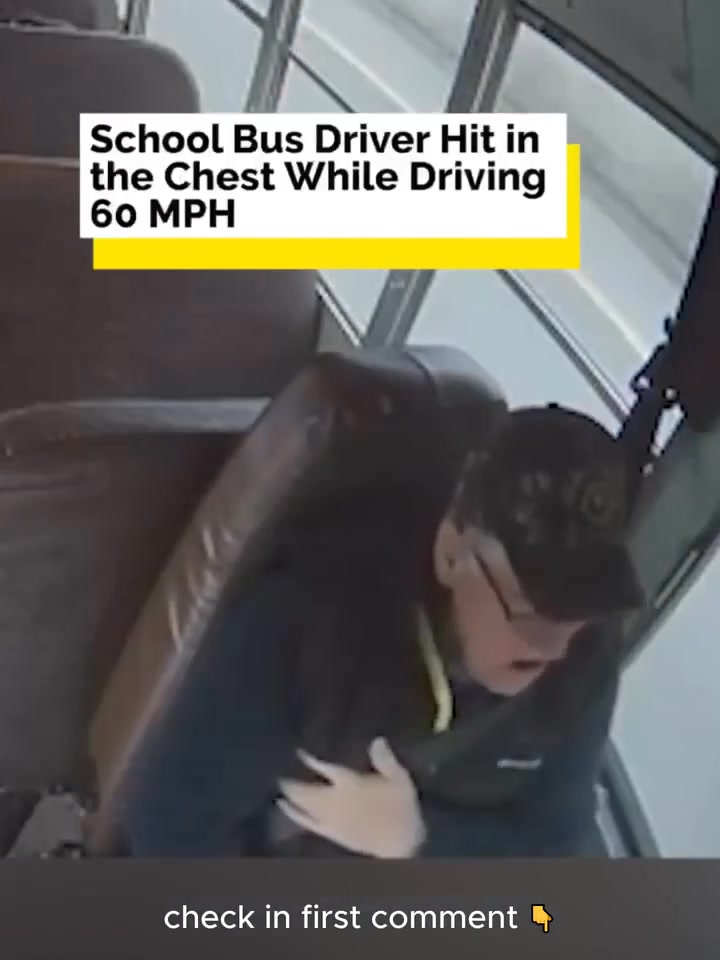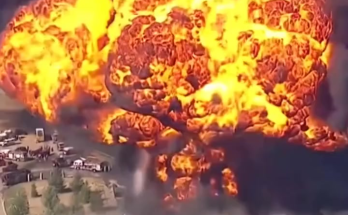An Ordinary Day That Took an Unexpected Turn
On a crisp autumn morning in Washington State, the girls’ basketball team from North Creek High School boarded their familiar yellow school bus for what was supposed to be a routine trip. They were headed to an away game—something the players, coaches, and parents had done countless times before. The atmosphere was lighthearted. Laughter and chatter echoed through the bus as teammates swapped playlists, shared inside jokes, and discussed strategies for the evening’s game.
At the front of the bus sat Stewart O’Leary, a veteran driver with over two decades of experience in student transportation. For O’Leary, this was simply another route on familiar roads. He had driven this team many times before and knew the responsibility that came with the job: keeping dozens of young passengers safe.
What no one on board could have predicted was that within the hour, this calm and predictable ride would turn into a dramatic test of reflexes, composure, and leadership.
When the Unexpected Strikes
The bus had traveled only about twenty miles when the ordinary was shattered by the extraordinary. Out of nowhere, a metallic object—believed to be debris that had fallen from another vehicle—came hurtling through the air. In a split second, it slammed into the windshield with terrifying force.
The sound of shattering glass jolted everyone to attention. Teenagers screamed. Coaches leapt from their seats. The bus itself lurched as O’Leary absorbed the impact of the object striking his chest.
For many drivers, that kind of shock might have triggered panic or loss of control. But O’Leary’s decades of training and composure in high-pressure situations immediately took over. With one hand firm on the steering wheel and the other steadying himself, he slowed the bus, carefully guided it toward the shoulder, and avoided what could have been a catastrophic accident.
Steering Toward Safety
What stands out most about that harrowing moment is not the danger itself but the calm way it was handled. Witnesses later said that O’Leary never shouted, never swerved recklessly, and never let go of his focus.
Instead, he performed a textbook example of defensive driving under crisis conditions:
- He eased off the accelerator rather than slamming the brakes.
- He maintained a straight line, preventing the bus from veering into other lanes.
- He guided the bus to a safe stop on the shoulder, minimizing risk for both passengers and nearby vehicles.
Meanwhile, the coaching staff onboard sprang into action. Head Coach Melissa Grant and Assistant Coach David Ramirez quickly moved through the rows, calming players and checking for injuries. Their ability to reassure the students kept panic at bay while O’Leary concentrated on bringing the bus under control.
When the wheels finally came to rest on the gravel shoulder, silence fell—a silence heavy with shock but also relief. Everyone was shaken, but everyone was safe.
A Driver’s Dedication
Although O’Leary sustained bruises and soreness from the impact, his first words were not about himself. According to those present, he immediately asked, “Is everyone okay back there?”
That single question reflected the essence of his role. For O’Leary, transporting students has never been just a job. It’s a duty rooted in trust. Parents place their children in his care, and the school relies on his vigilance. To him, safety is not just a policy—it’s a promise.
He was taken to a nearby hospital for evaluation. Doctors confirmed that while he suffered chest bruising and minor cuts from the broken glass, his injuries were not life-threatening. Within a week, he was back behind the wheel, continuing his routes as if nothing had happened.
But for the students and parents, nothing would ever feel quite the same. Their gratitude for his actions ran deeper than words.
Voices of Gratitude
In the days that followed, messages of thanks poured in. Parents wrote letters, community members left flowers at the school’s transportation office, and students posted heartfelt notes on social media.
One parent, whose daughter was on the bus, expressed it best:
“Mr. O’Leary didn’t just drive our children that day—he protected them. His quick thinking gave us all the most precious gift: the safe return of our daughters.”
Even the Bellevue Police Department praised his actions. A spokesperson remarked, “Maintaining composure in that type of situation is extremely rare. His ability to guide the bus to safety undoubtedly saved lives.”
Understanding the Risks on Highways
While this story highlights human courage, it also sheds light on a less-discussed issue: road debris.
According to the U.S. Department of Transportation, thousands of accidents each year are caused by objects falling onto highways—whether from improperly secured cargo, tire fragments, or mechanical failures. At high speeds, even a small piece of debris can become a deadly projectile.
Buses and trucks face particular risks because of their large windshields and the number of passengers onboard. A cracked windshield in a family sedan is frightening enough. In a fully loaded school bus, the stakes are exponentially higher.
This incident is a stark reminder that road safety isn’t just about how carefully we drive. It’s also about:
- Maintaining vehicles properly so parts don’t detach.
- Securing cargo tightly to prevent items from flying loose.
- Implementing routine highway inspections to remove dangerous debris before accidents occur.
Training That Saves Lives
Another reason this story ended in relief rather than tragedy lies in training.
School bus drivers like O’Leary undergo rigorous instruction before they are entrusted with students. They are taught how to manage mechanical failures, navigate adverse weather, and respond to emergencies. But training alone isn’t enough—experience matters.
O’Leary had been driving for more than twenty years. That depth of practice allowed him to rely on instinct when it mattered most. Instead of freezing, he acted. Instead of panicking, he focused.
This balance of training and experience is what turned a potentially devastating incident into an inspiring example of professionalism.
The Emotional Aftermath
For the players on the team, the experience was both frightening and transformative.
Seventeen-year-old forward Jasmine Lin recalled, “I’ve never been so scared in my life. But seeing Mr. O’Leary stay calm made me feel like we were going to be okay. It showed us what real courage looks like.”
For O’Leary himself, the emotional weight was equally heavy. He admitted later that the incident made him reflect deeply on the responsibility he carries every day. “Parents trust us with their children. That’s not something I take lightly. That day reminded me how quickly things can change.”
Returning to Routine, with a New Perspective
Within a week, bus routes resumed as normal. The basketball team continued its season. But the community carried forward a new sense of perspective: that even routine tasks can involve moments of extraordinary responsibility.
The players, parents, and staff all agreed that what happened on that highway would not be forgotten. It became a shared story—a reminder of resilience, vigilance, and the power of calm leadership.
Lessons for the Broader Community
The incident offers important lessons beyond one school district:
- Preparedness is essential. Training drivers, coaches, and staff for emergencies can make the difference between chaos and safety.
- Roadway safety is everyone’s responsibility. From securing cargo to reporting hazardous debris, small actions prevent accidents.
- Calm leadership matters. Panic spreads quickly, but so does composure. Leaders who remain steady can anchor those around them.
- Everyday heroes exist. Heroism isn’t always dramatic. Sometimes it’s simply doing your job with focus and care, even when circumstances turn dangerous.
Recognition and Honor
The North Creek School District formally recognized O’Leary at a special assembly. Students, parents, and staff gave him a standing ovation as he was presented with a plaque honoring his service.
Superintendent Karen Douglas summed up the community’s gratitude: “Stewart O’Leary’s actions remind us of the quiet heroes among us. He showed courage not by choice, but by instinct—and we are all grateful.”
Conclusion: Courage in the Everyday
This story could have ended very differently. A bus filled with students could have been involved in a serious crash. Families could have faced heartbreaking news.
But instead, because of one driver’s composure, one coaching staff’s quick response, and a community’s shared resilience, it became a story of survival and gratitude.
The lesson is clear: heroism often appears not in dramatic gestures but in everyday responsibility carried out with care, training, and calm under pressure.
For the students of North Creek High School, the memory of that day will linger long after their basketball season ends. And for their families, the knowledge that their children returned home safely will forever be linked to the steady hands of a driver who did more than steer a bus—he safeguarded lives.



